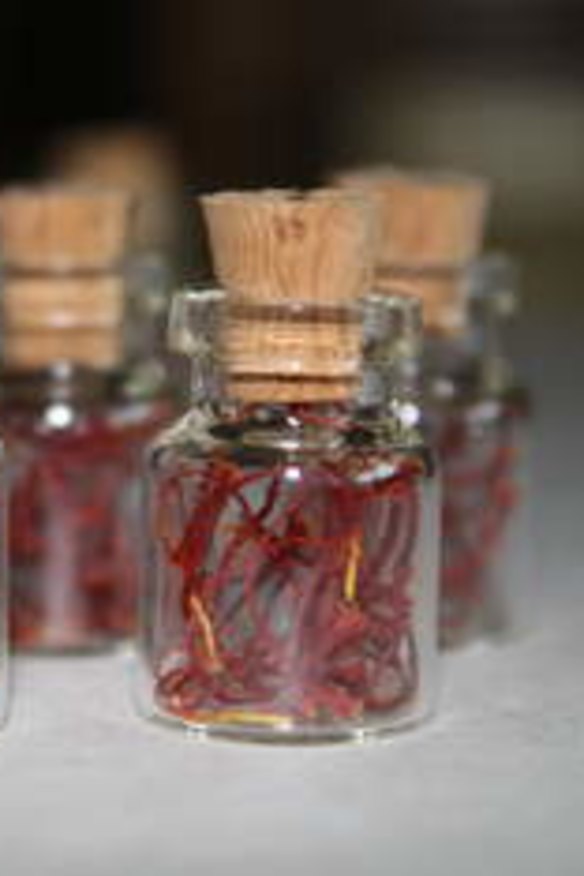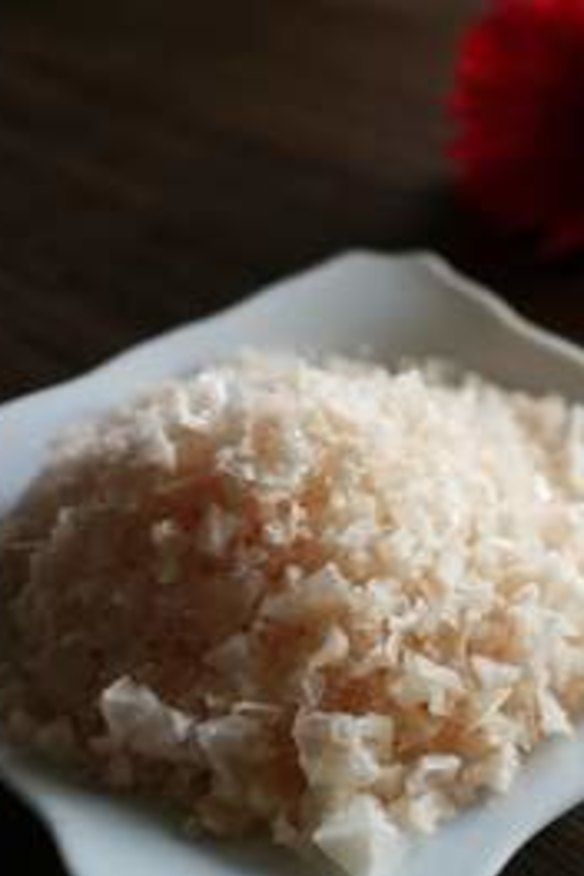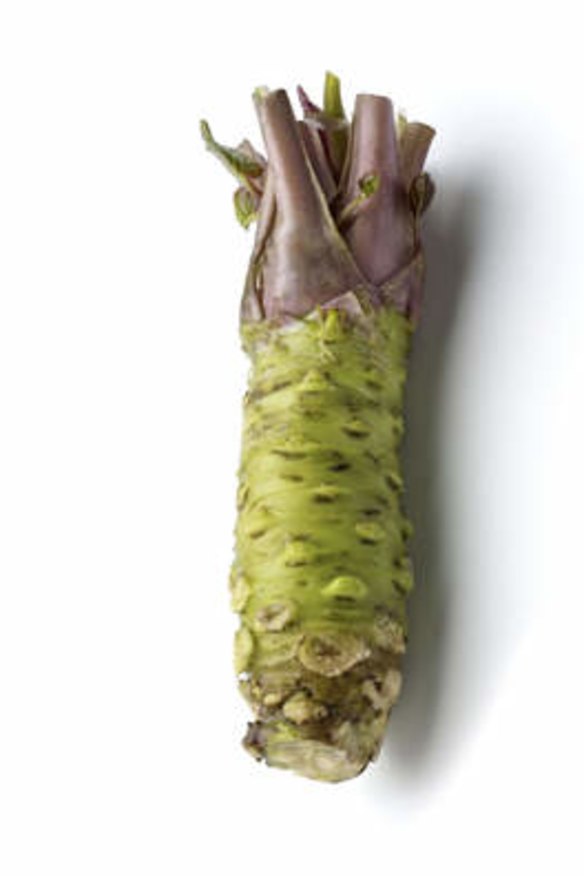Five of a kind: Local harvest
From fertile pockets of Victoria and environs come these precious and flavoursome offerings.

Saffron
Grown and used for four millennia, saffron is a spice woven into the fabric and food of human history. These days it is known largely for its subtle flavour and its expense: in Australia, wholesale prices of saffron as sold by weight cost more than its equivalent in gold. In the Goulburn Valley, Lisa Menhenett has spent four years building up her crop, sold chiefly at the Echuca Farmers' Market at the end of each autumn harvest. Its success when grown in Tasmania prompted her to plant a test run in the Goulburn Valley region. The dried stigmas of the saffron crocus form the saffron threads, with a kilogram of saffron requiring between 110,000 and 170,000 flowers. A jar containing 0.05 milligrams sells for $10.
L&L Menhenett, Arcadia, Goulburn Valley; 5826 7211. lmenhenett@bigpond.com

Murray River Salt
A lot is spoken about French salt, but up on the border of Victoria and NSW, the harvest and sale of Murray River Salt has created an international appetite for Victoria's own subtly pink crystalline mineral. Harvested from an ancient inland aquifer far saltier than the sea, the aquifer water is diverted to shallow lake beds where the sun evaporates the water, leaving only a salt crust that is then cleaned and packaged. The result is a mineral-rich product with a pink glow and subtle, savoury taste that has made it a favourite among chefs (Neil Perry is a vocal fan). While diversion of the aquifer originated as a way of saving the Murray from harmful levels of salinity, the product has become widely regarded courtesy of local trace elements that imbue the crystal flakes.
Murray River Salt, Mildura; 5021 5355. sunsalt.com.au

Wasabi farming has become something of a family tradition for Michelle Dundas: her father turned to the idea after seeing the plants growing in riverbed systems in Japan. Fifteen years later, the farm at Thornton grows vast numbers of the spicy green brassicaceae for restaurants and home growers. Though it's the long root of the plant that produces the famously spicy wasabi paste, both the stems and leaves are edible. The hydroponic growing methods of earlier days have been left behind in favour of placing the plants in the ground: clearly the Thornton climate is cold enough to mimic growing conditions in Japan. Pots of wasabi can be bought by contacting Dundas at the nursery; it takes about 18 months before the root is large enough to be harvested.
Rubicon Mountain, 1123 Taggerty Road, Thornton; 0409 042 858. michelle@rubiconmountain.com.au
A quest for a hobby sent John Pahl and Bev Shawadler in search of their first coriander seedlings following the purchase of a farm in South Leongatha 13 years on. Today, the couple have a modest though very successful commercial enterprise spreading across 3.25 hectares and selling primarily to supermarkets. It's no longer a hobby. Known for its complex flavour profile spanning the spectrum from citrus to sage, fresh coriander is essential when preparing many south-east Asian dishes. Victoria's climate supports good growing conditions for three quarters of the year, though high summer temperatures can prove a killer. The pair plant all seedlings by hand, with the herb harvested between four and six weeks after planting.
Herbit Herbs, Leongatha South. bestdc@dcsi.net.au
''Garlic ain't garlic,'' according to Port Campbell-based garlic farmer Simon Illingworth. One of a growing number of Australian farmers relishing the increased appetite for home-grown garlic, Illingworth grows eight varieties of the pungent bulb, representing species from Cuba and Russia to France and California. Farming just one kilometre from the Twelve Apostles, he says garlic thrives in the howling winds and salt spray, resulting in a product of purety and intense flavour, not to mention visual variety. Bulbs range in colour from cream to purple to blood-red. Sold nationally online, he is also producing a range of garlic products including black garlic and dehydrated garlic. With no quarantine required, the product is also free from chemical sprays.
Ethical Farm, 98 Currells Road, Port Campbell; 0431 933 406. garlicworld.com.au
The best recipes from Australia's leading chefs straight to your inbox.
Sign up